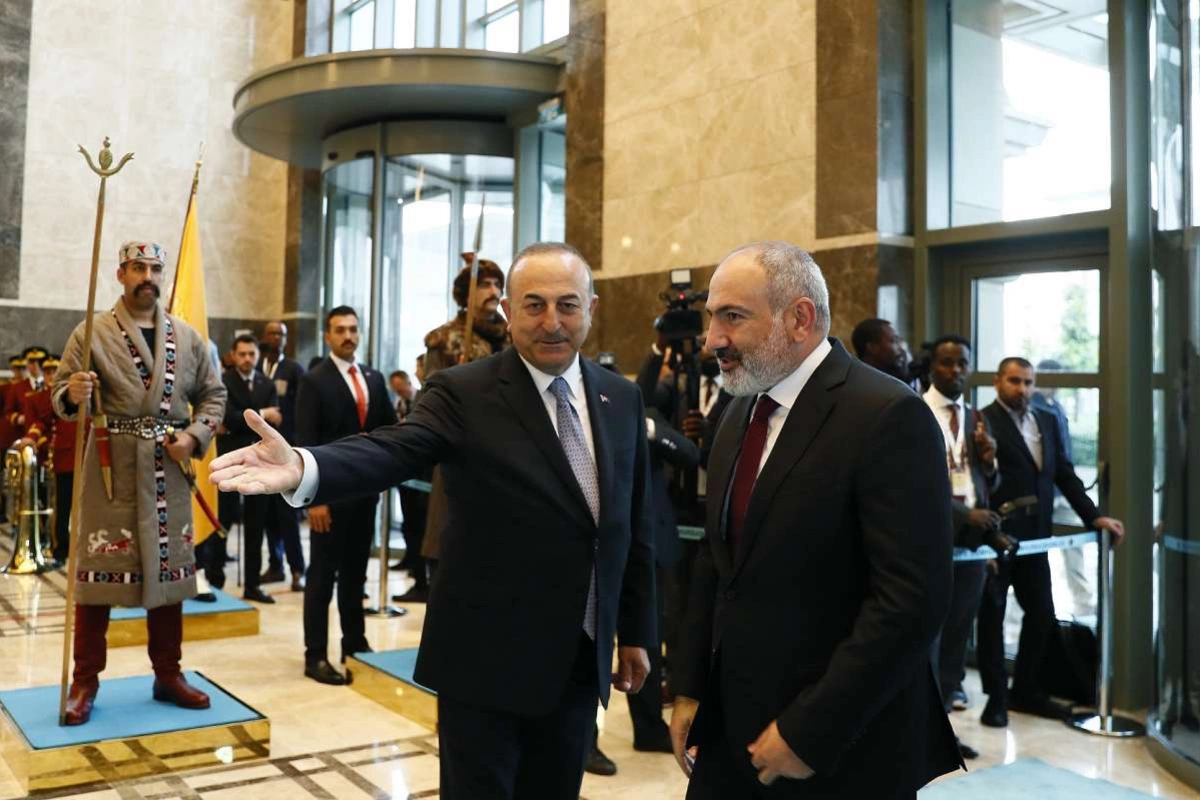
The weather may have been grey and drizzly in Ankara on June 3, but the inauguration ceremony of the newly re-elected Turkish President Recep Tayyip Erdogan was undoubtedly a noteworthy affair.
Image: primeminister.am
World leaders and dignitaries from roughly 78 countries attended the event, including 21 heads of state, 13 prime ministers, and representatives from several notable international bodies. There were certainly plenty of familiar faces from the Caspian Region among the guests, such as the Presidents of Azerbaijan, Kazakhstan, and Uzbekistan. But the presence of another Caspian leader, Armenia’s Prime Minister Nikol Pashinyan, was perhaps one of the most striking features of the day.
The prime ministerial visit marked a new milestone in relations between Türkiye and Armenia, which have—to put it mildly—largely been frosty. In fact, the pair have never had formal diplomatic ties, primarily due to Armenia’s long-term occupation of a significant portion of Azerbaijan’s internationally recognized territory. After all, Türkiye and Azerbaijan are staunch allies with deep cultural, political, and economic ties. The duo sometimes even refers to themselves as “one nation, two states.”
Because of this solidarity with Baku, Türkiye has kept its land border with Armenia almost totally shut since 1993. Ankara has opened the border just once in roughly thirty years when it allowed Armenian trucks carrying disaster relief supplies to pass through in the aftermath of the devastating earthquakes that hit south-eastern Türkiye and northern Syria last February.
Ankara has, however, briefly explored the possibility of normalizing ties with Yerevan in the past. The foreign ministers of Armenia and Türkiye signed protocols towards this end in 2009, but neither country’s parliament ever ratified, and ultimately it came to nought. In Türkiye’s case, the protocols’ failure to mention the Armenia-Azerbaijan conflict also caused upset at home.
And yet, in recent years, changing regional dynamics have given new impetus to the prospect of normalization for Ankara and Yerevan. The situation in the South Caucasus today is markedly different than it was in the 1990s and in 2009. Azerbaijan has since regained almost all of its territory after a major resumption of hostilities with Armenia in 2020 that left only a small rump area outside of Baku’s control.
Despite intermittent skirmishes between Armenian and Azerbaijani forces since the 2020 outbreak, the two leaders of either country, Prime Minister Pashinyan and Azerbaijan’s President Ilham Aliyev, have continued to hold meetings at regular intervals, mediated by a third power, usually the U.S., European Union, or Russia. The pair also met in Ankara after President Erdogan’s inauguration.
Talk about a peace treaty can be heard from both countries’ governments. Late last month, President Aliyev expressed his belief that a deal was possible, as Armenia has agreed to recognize Azerbaijan’s territorial integrity. Last week, Armen Grigoryan, the Secretary of Armenia’s Security Council, also went so far as to say he thought a deal could be reached by the end of 2023.
These changes are also important for Turkish-Armenian relations, as Türkiye has reaffirmed its stance that normalization with Armenia can only come after a peace settlement between Yerevan and Baku.
New relations with Türkiye offer Armenia an opportunity to overcome its current economic isolation and gain access to new Turkish markets and ports on the Black Sea. Armenia could also reap the benefits of participating in new transregional infrastructure projects such as job creation. Türkiye also stands to gain from increasing bilateral trade with its neighbour, as well as the prospect of driving new commercial activity in more deprived areas near its eastern border.
The two countries have already taken small steps toward normalization. Direct passenger flights between Istanbul and Yerevan resumed last year after they were stopped in 2019. Earlier this year, both sides also announced a new joint project to redevelop a historic bridge in the Turkish-Armenian border area previously used by merchant caravans in bygone centuries.
Though this move is largely symbolic, this once great piece of trade infrastructure certainly gives a flavour of what the two neighbours could achieve together.
Share on social media